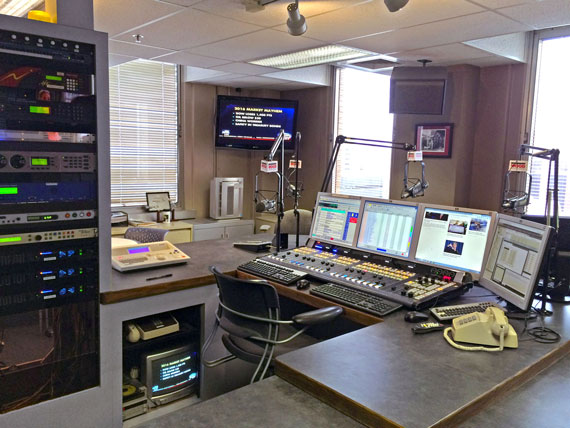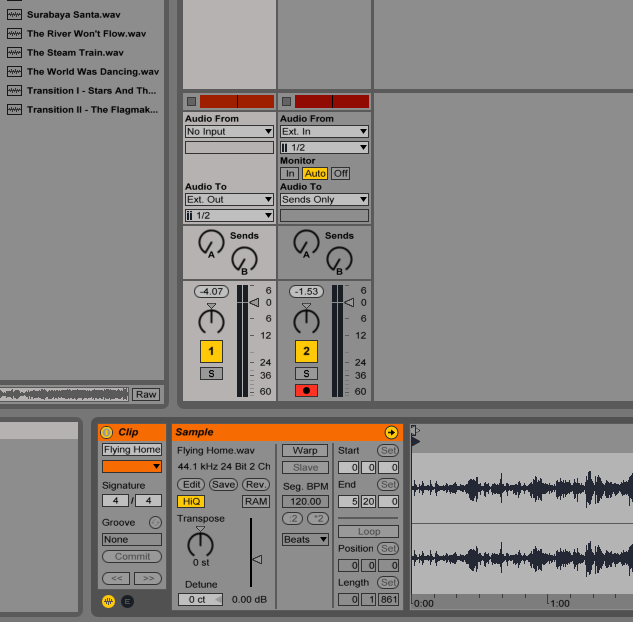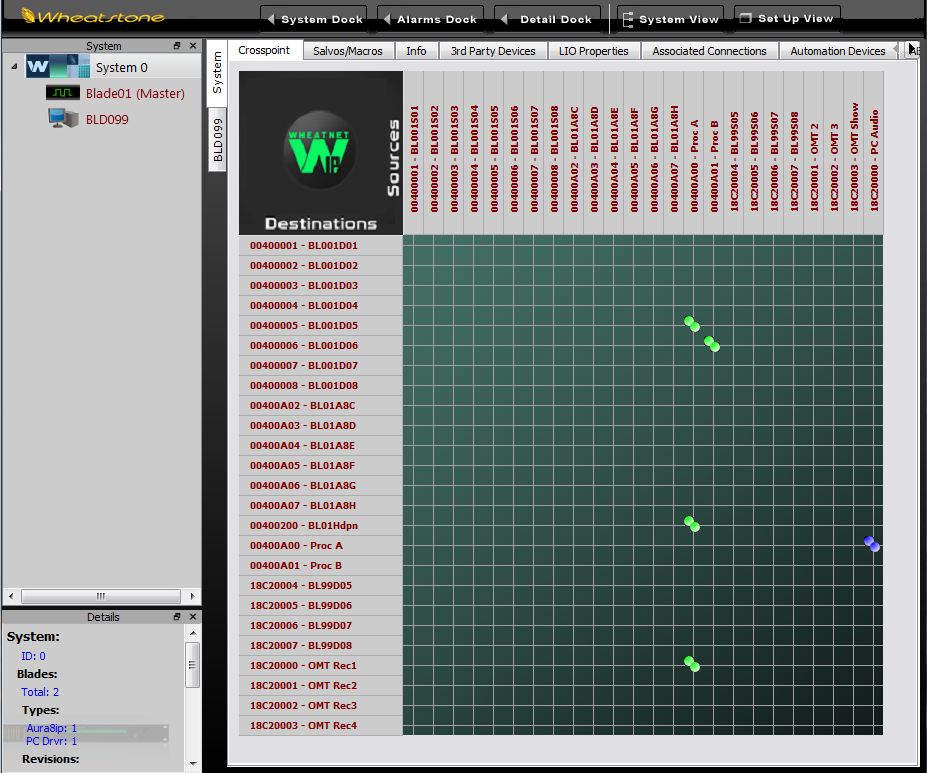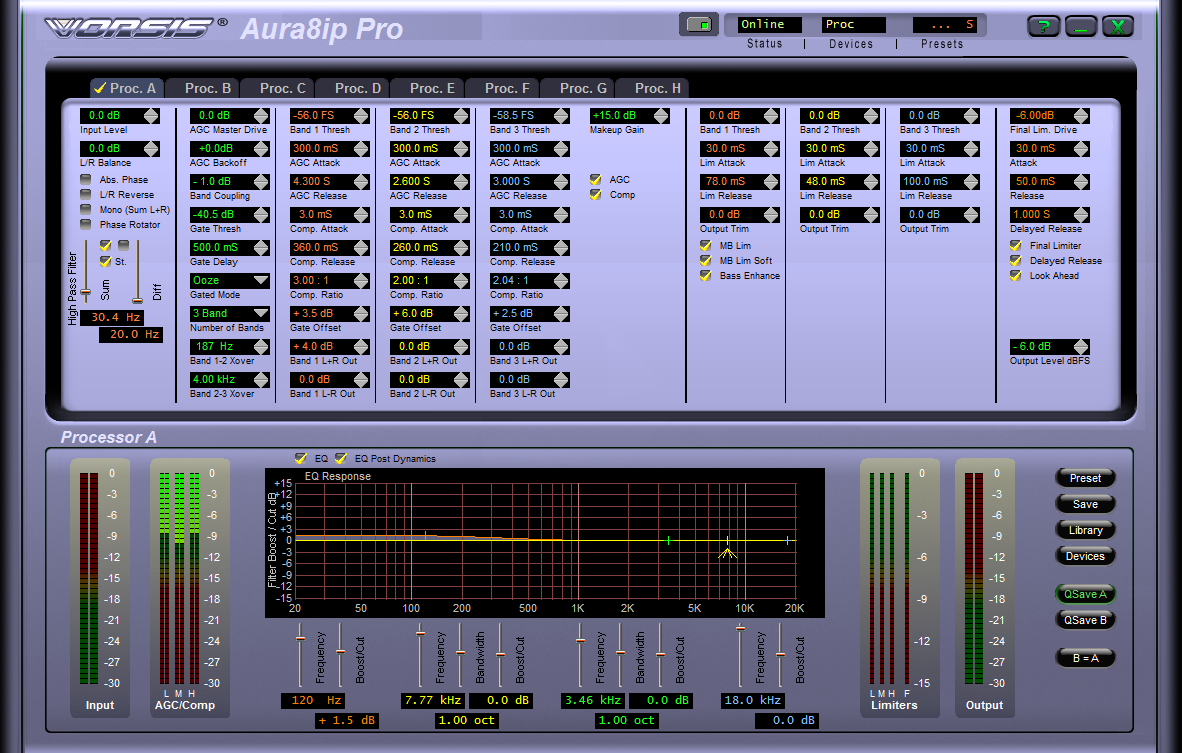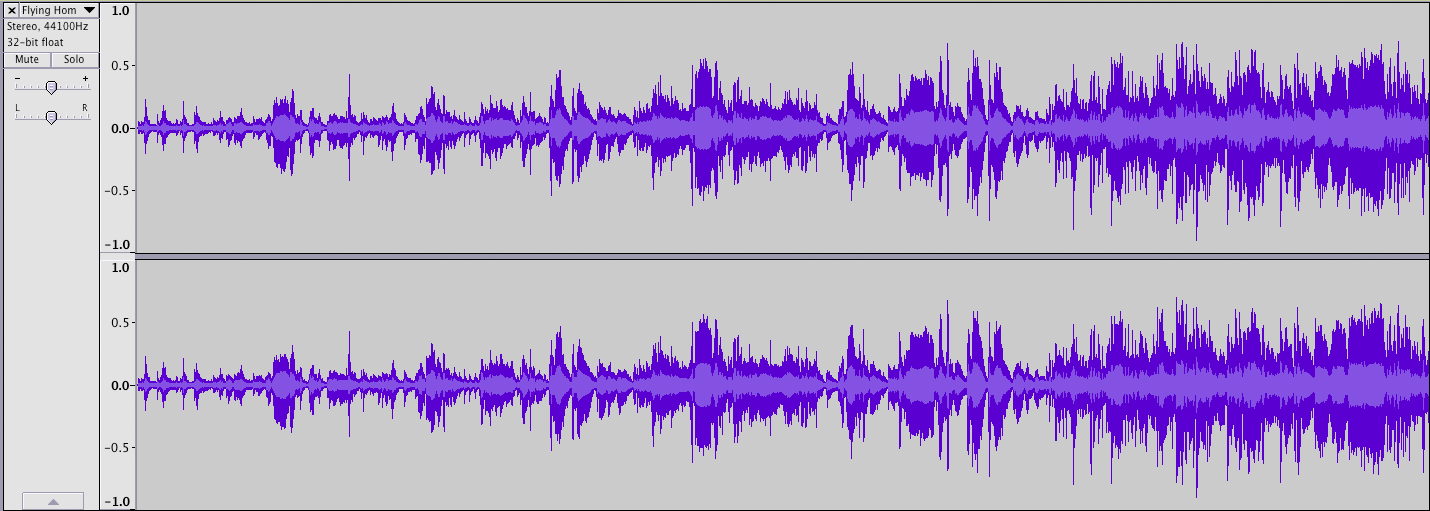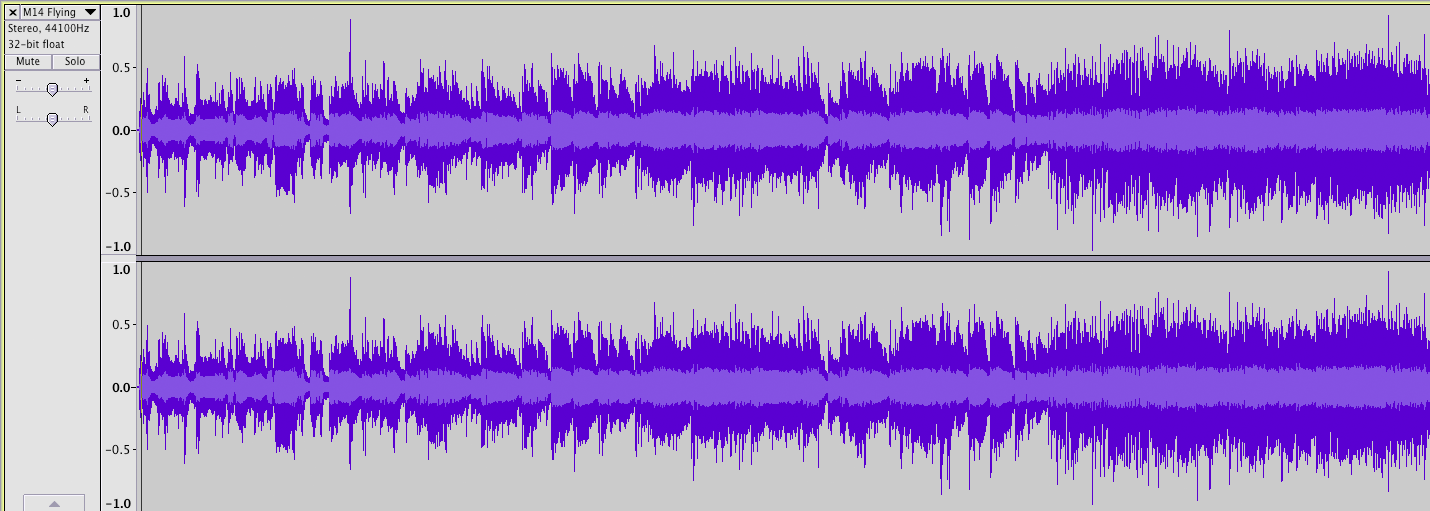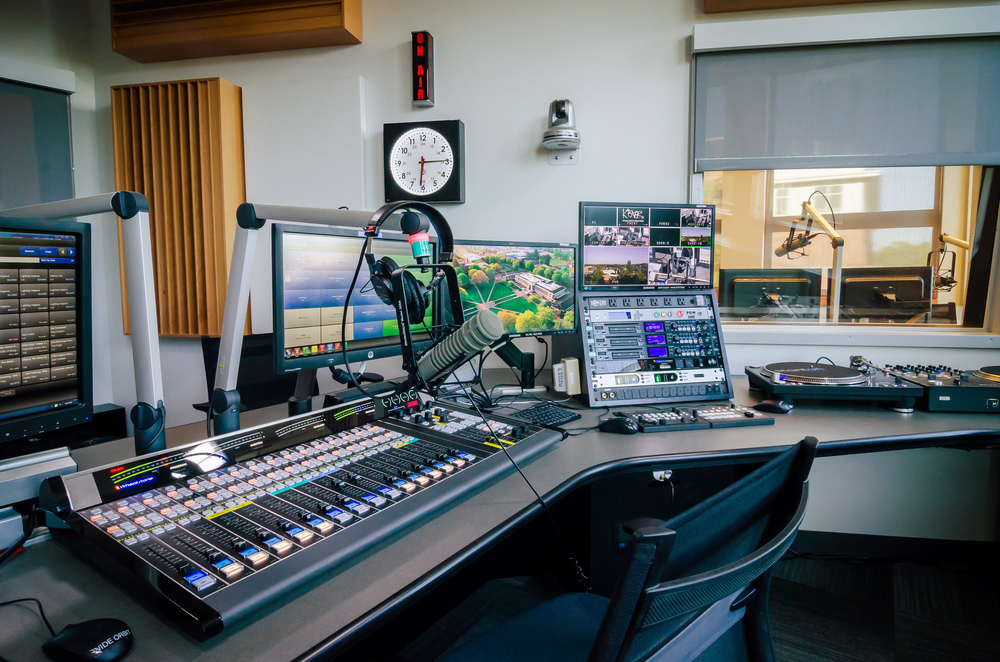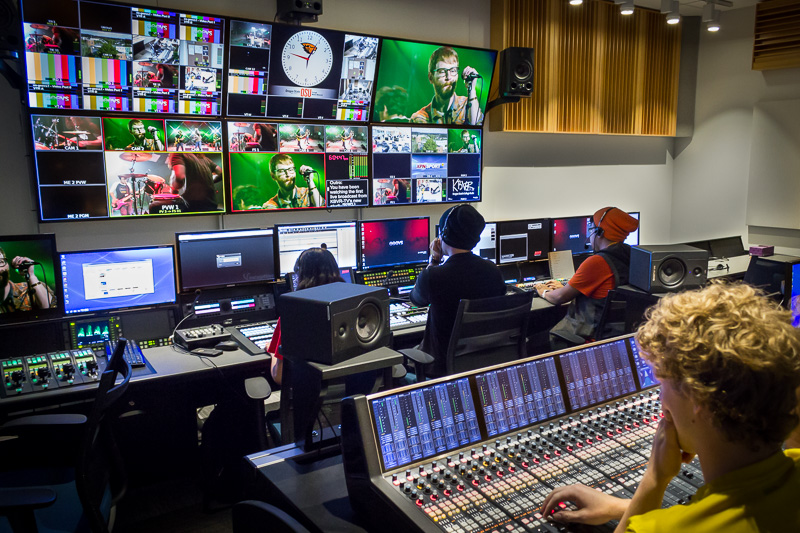WHEAT:NEWS Radio Jan 2016 - Vol 7, No. 1
Got feedback or questions? Click my name below to send us an e-mail. You can also use the links to the right to follow us on popular social networking sites. The tabs at the very top of the page will take you to our most often visited pages.
IP’s a Ten Gallon Hat
It’s been said that radio is made up of the same eight people wearing different hats. That could explain a lot about Marc Hill, who has worn the music director hat, the talent hat, and the technology hat in his 30-plus years in broadcasting. More than 20 of those years have been spent acting as the IT Manager for what is now iHeartMedia in West Michigan.
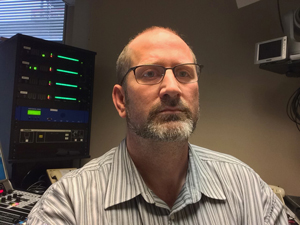 We got to know Marc while working with him on a new Wheatstone WheatNet-IP networked facility for the seven-station cluster. He said he “wandered” into IT in the late ‘90s when he unwittingly volunteered to install the Prophet/Wizard automation system. He worked the overnight shift at the time, and eventually traded in his talent hat for IT – a ten-gallon hat that now includes streaming, mobile, and, more recently, IP audio networking. He still laments that he gave up his talent gig before he could try out the new automation. “That was kind of unfair because I never even got to use it. I came off the air overnights to install it so someone else could use it,” he says.
We got to know Marc while working with him on a new Wheatstone WheatNet-IP networked facility for the seven-station cluster. He said he “wandered” into IT in the late ‘90s when he unwittingly volunteered to install the Prophet/Wizard automation system. He worked the overnight shift at the time, and eventually traded in his talent hat for IT – a ten-gallon hat that now includes streaming, mobile, and, more recently, IP audio networking. He still laments that he gave up his talent gig before he could try out the new automation. “That was kind of unfair because I never even got to use it. I came off the air overnights to install it so someone else could use it,” he says.
Little did Marc know at the time that he would be one of the fortunate few with a front-row seat to the IP radio revolution. At one point, he wrote the code for a web program that hundreds of schools logged onto for school closings and that fed local media outlets. Before that, he was coding websites. “I think we did ‘now playing’ on our websites long before anyone else.”
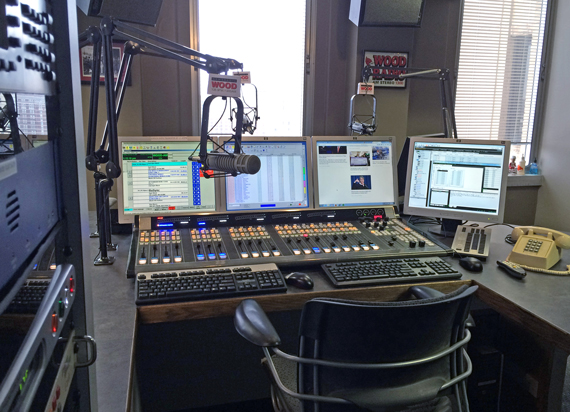 Now that everything is being connected together in the studio, he’s on to the next IP project that involves WheatNet-IP audio networking and IP consoles, the Wheatstone LX-24. “Being able to program these boards, it’s probably the highlight of my career,” says Marc.
Now that everything is being connected together in the studio, he’s on to the next IP project that involves WheatNet-IP audio networking and IP consoles, the Wheatstone LX-24. “Being able to program these boards, it’s probably the highlight of my career,” says Marc.
He’s right at home creating salvos and macros for routing and triggering commands, and setting up board presets for individual shows and talent. Having worn the talent hat himself, Marc has a pretty good idea how IP networked consoles can make a difference. He mentions one announcer for one of the talk stations in particular, who is missing an arm and is only able to operate the LX-24 IP console with his right hand. “For him to be able to hit a button and bring up his profile that’s basically the opposite of what everyone else has is just amazing. It takes a split-second to get that board comfortable for him.”
The cluster had been nursing along analog boards and punch block routing for more than 25 years. It’s been one fix after another for the seven stations, which include a rocker (WBFX-FM), a top 40 (WSNX-FM), a soft rock (WSRW-FM), two news/talk stations (WTKG-AM, WOOD-AM), a country station (WBCT-FM), and a sports station (WMAX-FM).
This is the year when Marc finally gets to connect it all together – routing and board operation, even streaming. “I’d say the biggest thing is how we now tie into all seven of the streaming stations for high school or college sports. Before, anytime we wanted to put a game on one station’s stream and then another station’s stream, it had been a problem. Somebody had to go back to the engineering room and patch A-17 into D-12 or whatever it was, and flip a switch. Now, the board ops just talk to the play-by-play guy and hit a button on the board, and the stream splits away from the station to carry the game,” he says.
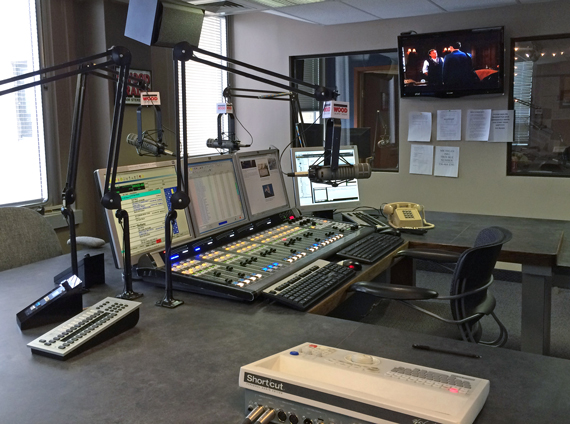 All Marc had to do was create salvos for specific buttons on the LX-24s for the cluster’s sports station as well as other stations that pick up the play-by-play.
All Marc had to do was create salvos for specific buttons on the LX-24s for the cluster’s sports station as well as other stations that pick up the play-by-play.
Overall, he worked with the cluster’s CE Don Missad and assistant engineer Rich Bass – both of whom are more confortable working the RF and analog end of the business – to get the studios designed and set in place. They added networking and IP boards in several stages, setting up the overall infrastructure first and then retrofitting each of the 14 studios for the seven stations. Four of the seven on-air studios have been completed, with the three remaining on-air studios slated for completion this year. The group is phasing in IP audio networking slowly over time, and expects to have finished all studios – seven on-air studios, three production rooms, a traffic control room, and producer and news booths, plus four reporter stations – by the end of 2017.
No stranger to IP, Marc is keeping our support guys hopping with questions about APIs, salvos and system configuration.
Taking the Aura8-IP Beyond Broadcasting
By Scott Johnson
When you think of Wheatstone processing, you naturally think of broadcasting. But if an audio engineer tucked an Aura8-IP under his arm and left the station, would he find other uses for it? The answer, I found out recently, is a resounding yes!
Wheatstone processing gear has myriad applications in the broadcast world. There’s almost no corner of a radio facility where a Wheatstone processor can’t be of assistance. But we rarely think of what we might be able to do with, say, an Aura8-IP outside the station’s doors. I did wonder. There’s a big, wide world of audio out there, waiting to be tamed.
A couple of years ago, I mixed sound for a local theatre’s production of a musical. On the spur of the moment and with some assistance from Wheatstone’s Phil Owens, who played bass in the show’s orchestra, I recorded the four vocals and the band to eight discrete tracks on a digital audio workstation (DAW) for later mixing. I recently got around to completing that work; it was quite a challenge given the impromptu nature of the tracks and the characteristics of a live performance that was not being produced with recording in mind. After a few weeks of work, I had fully mixed material, ready to go. But could it benefit from a bit of mastering?
To answer that question and satisfy my curiosity about unconventional uses of Wheatstone processing, one day I brought the tracks with me to the office and did some experimenting. I thought through several options and arrived at what I thought was probably the simplest test setup.
First, I installed a digital audio workstation (Ableton Live) on a PC in my office, one which already had a WheatNet-IP driver set up and running from some previous testing. I configured the workstation to send the audio of my final mixes, which I imported as uncompressed WAV files, out through a stereo channel of the driver. I then created a second audio track and configured it to take its input from a WheatNet-IP driver channel and record it. You can see the basic Ableton setup in Figure 1.
Figure 1 - Ableton Live
I then walked back to the factory floor and borrowed an Aura8-IP BLADE-3, fresh off the production line, and brought it to my office. (I love the smell of new gear in the morning!) Because there would be only two devices on this network, I connected the processor’s gigabit Ethernet port (which is auto-MDI / MDIx) directly to the corresponding port on my PC. Following the simple setup wizard dialog on the unit’s front panel, in short order I had the two communicating perfectly.
I then brought up WheatNet-IP Navigator, the software used to set up WheatNet-IP networks, and ensured that both devices showed up. I then did some simple routing as shown in Figure 2. I routed the audio from the DAW (PC Audio) to the first processing channel of the Aura-8IP (shown as Proc A on the crosspoint matrix). I routed the output of that processor channel back to the PC. (The destination is shown as OMT Rec 1 because this machine had previously been set up to test an automation system, and that was the name already assigned. I could have changed it if I liked.)
Figure 2 - Navigator Crosspoint Routing
I also routed the processor’s output to the Aura8-IP’s headphone jack for listening, and also to a digital output, just so that I could see it on a front panel meter.
What I now had was the ability to play the audio back, looped through the processor, and record the result on a separate track. The last step was to run the Aura8-IP Pro GUI, the software which would allow me to adjust the parameters of the processor from the computer, shown in Figure 3.
Figure 3 - Processor Pro GUI
My first thought was to explore using simple AGC functions to tame the widely varying levels of the stage performances. I chose a particularly dynamic track for testing; that is, one with very soft and very loud passages.
The best place to start was with a simple preset. I chose the “HD 3-Band Neutral” factory preset in the GUI; this gave me light AGC and compressor action and a fairly flat EQ. The results weren’t perfect and I didn’t expect them to be, but they were in the ball park.
Over the course of several passes through the musical number, I slowly adjusted the AGC, equalization, and compression to my own taste. Using the Pro GUI made the adjustments very easy to perform but gave me extremely detailed control over every parameter. Had I wished to, I could also have used the “Guru GUI,” which simplifies operation by providing very general controls. But like most audio engineers, I am a control freak when it comes to sound.
After an hour or so (again, control freak here) I had managed to tailor the processor's settings to create a sound that made me happy. It kept the levels much more consistent, yet preserved the feel of the material’s original dynamics.
Using the GUI made adjustments extremely convenient; I was able to easily switch between Ableton Live’s window for transport and playback control, Navigator for routing, and the Aura8-IP Pro GUI for processing as I fine-tuned my adjustments and bounced the track.
The results were pretty impressive, even for a first pass. Here’s the track before any processing took place, including a short audio clip from a minute or two in at a build point in the music:
(Click image to download the audio file)
As you can see, the song starts off quite soft with just piano and one very subdued vocal. But toward the end, it builds to a strong, dense crescendo. Combining the action of the Aura8-IP’s very smooth AGC and very precise compressor, working in three separate bands, I was able to tame that a bit and gain the result seen here. The audio clip is from the same place:
(Click image to download the audio file)
From the waveform alone, you can see that the softer passages have been brought up considerably, but in a gentle way with long release times that preserve the dynamics of the music. We haven’t squashed the piece’s dynamic range into oblivion; we’ve merely given the soft spots a very gentle boost so they’re more audible. The slight reduction in contrast makes the listener less likely to reach for the volume control, especially in a noisy environment where those parts might disappear.
What you don’t see is the flat rectangular waveform so typical in much popular music today, where loudness is the priority. If you’re processing audio for loudness, to compete with other tracks in an MP3 playlist or other stations on the air, clean, clear loudness is what you need, and our gear can certainly do that. But here we have a case where loudness takes a back seat to the importance of a natural sound with the dynamic range of a live performance. It’s nice to know that when properly used, our processors easily accommodate those needs, too.
The ability of the Aura8-IP Pro GUI to save and recall presets on the fly was invaluable as I continued to experiment with “mastering” this show audio. I could save a conservative set of parameters, then get as wild as I liked with the settings from there, knowing I could easily recall the saved preset if things went terribly wrong. I could also play various bits of audio while recalling several different presets in sequence in order to make comparisons and determine what processing strategies gave me the best overall results.
Having multiple processing channels and the routing to use them was also extremely nice. While it didn’t make the final cut, I did use one configuration with processor A running a slow, single-band AGC, routed to the input of processor B running a multiband setup with faster settings. A couple of clicks in Navigator made the daisy-chain routing a snap, and ready-made factory presets gave me good starting points with each processor.
My eventual conclusion was that if I could achieve such compelling results using only one or two of the eight processing channels available in the Aura8-IP, the possibilities for other uses were endless. Like a pocket multi-tool, the box put a versatile and powerful set of audio processing and routing implements into my hands to use in any way the situation dictated. I could easily see this box finding a comfortable home in the outboard rack at the front-of-house console at a concert or theatre gig, in the credenza at a recording studio, or by the console in a remote production truck. Or, of course, in your on-air studio, TOC, production studio, or remote van.
About Scott: Scott Johnson is a Wheatstone systems engineer as well as the company’s webmaster, social media manager, newsletter editor, and video director/producer. He’s also an audio engineer and has spent most of his life recording, reinforcing, mixing, and mastering sound. His most recent credits as sound designer / A1 include regional productions of "Les Miserables", "RENT", "Pippin", "Evita", "In The Heights", and "Into The Woods". He is looking forward to mixing “You’re a Good Man, Charlie Brown” at Carteret Community Theatre in early February.
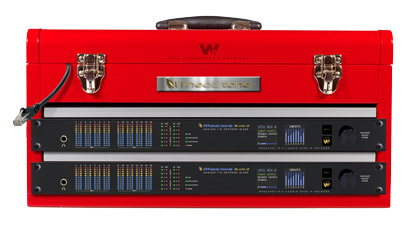
Your Question Answered
Q: I’ve been told that WheatNet-IP is the audio network that has integrated control. What does that mean?
A: IP audio isn’t just about routing. It’s also about being able to control and automate audio. For example, WheatNet-IP has an integrated control layer that carries all the logic functions for audio. Control is built into each WheatNet-IP connection point that is shared with other IP connection points across the network, giving you access to not only all sources at once, but also the presets and any associated logic that goes along with each feed for controlling such things as mic ON/OFF, or changing remote mic settings for IFB, processing and other parameters. Being able to route audio in tandem with full system control makes a world of difference when it comes to handling the unexpected or repurposing a news set for multiple productions. Our Andy Calvanese explains this seamless integration of control, access and tools in the following video...
Integrating New Media with Broadcast
By Erik Utter, Utter Associates
If you asked me which of the many projects I worked on last year showed the most promise as a model for integrating new media with broadcast, I’d have to choose the new $3.1 million, 14,000-square-foot media center at Oregon State University in Corvallis, Oregon.
It’s modern, it’s multifaceted and it’s an open, collaborative environment where students get hands-on experience producing content for the university’s KBVR-TV, KBVR-FM, the student newspaper, a quarterly magazine, plus a website and social media.
As the engineering and consulting firm responsible for planning and design of the new facility, I was able to do some interesting things. For example, the six Grass Valley LDX HD studio cameras — one of which is on a crane — can be moved between studios or broken down and transported for live productions from around the campus utilizing existing fiber infrastructure.
Then there’s the Wheatstone WheatNet audio-over-IP network, which is the backend routing and control system for a Wheatstone Dimension Three console in the main newsroom and multiple LX-24 consoles in FM and ancillary production spaces. All I/O and control is managed through the WheatNet-IP audio network, making it possible to connect any console channel to any source in the environment. This makes changes a lot easier, so that the university can reuse studios for any purpose and instantly change and share microphone feeds, console mixes, and IFB connections. Students can completely reconfigure their resources depending upon whether the production is a newscast, a music production or a production in concert with the FM station.
For a large format board, the Dimension Three had everything the university needed, yet was intuitively laid out so that the average student could get the hang of it easily.
For sports and other remote venues, the university also went with the L-8 audio console, another WheatNet-IP audio console that was sized just right for mixing in the field. We linked it to the studio network from the field using optical fiber.
Audio-over-IP was absolutely critical to having that ability to reconfigure feeds and control on a production-by-production basis.
WheatNet-IP also provides a common platform for resource sharing and routing of microphones, processors, servers and even the intercom. The RTS production intercom interfaces to WheatNet-IP over MADI links, allowing for complete intercom functionality from any control surface as well as simplified IFB and mix minus routing.
The system is really giving the university the flexibility it needs today, and as an AES67 compatible system, will give it the flexibility it needs in the future.

Wheatstone
- Horizon Broadcast LLP (India) purchased sixteen IP-16 and ten IP-12 digital audio consoles with WheatNet-IP audio networking, plus IP interface modules for the D-75 console for Radio Mirchi’s Entertainment Network, India.
- Audio Solution (Taipei, Taiwan) purchased an Air-1 console and four I/O BLADEs for a WheatNet-IP audio network.
- Beijing Pacific Budee Technology Co. (China) purchased a Dimension Three TV audio console for Tibet TV.
- TV Globo (São Paulo, Brazil) purchased two I/O BLADEs for an STL intercom system.
- Televisa (Mexico City, Mexico) purchased four I/O BLADEs for an announce booth for a remote sports application through Sistemas Digitales, Mexico.
- Sinclair’s KRCG-TV (New Bloomfield, MO) purchased a Glass E Virtual Mixer for an existing WheatNet-IP audio network.
- Florida State University (Tallahassee, FL) purchased an LX-24 control surface and IP-12 digital audio console for new on-air and production studios.
- Tribune’s WGN-TV (Chicago, IL) purchased three I/O BLADEs to expand an existing WheatNet-IP audio network.
- University of Illinois’ WILL-AM/FM (Urbana, IL) purchased three L-12 control surfaces.
- Tribune’s WPIX-TV (New York, NY) purchased an E-6 control surface for an existing WheatNet-IP audio network.
- Youngstown State University’s WYSU-FM (Youngstown, OH) purchased four E-1 control surfaces for a studio rebuild.
- KFAI-FM (Minneapolis, MN) purchased an L-12 control surface for a WheatNet-IP audio network.
- Sinclair’s WEYI-TV (Flint, MI) purchased a Series Four TV audio console.
- Saga Communications’ WAQY-FM (Springfield, MA) purchased two E-1 control surfaces and two IP-12 digital audio consoles.
- KVVU-TV (Henderson, NV) upgraded a D-10 console.
- CBS (Miami, FL) purchased an E-6 control surface and WheatNet-IP audio BLADEs.
- Townsquare Media (Grand Rapids, MI) purchased an L-12 control surface and WheatNet-IP audio BLADEs.
- Beasley Broadcast (Fayetteville, NC) purchased three E-6 control surfaces and WheatNet-IP audio network BLADEs.
- Townsquare Media (Oneonta, NY) purchased an I/O BLADE for an existing WheatNet-IP audio network.
- Apex Broadcasting (Charleston, SC) purchased an IP-12 digital audio console.
- WHIZ-AM/TV (Zanesville, OH) purchased an IP-12 digital audio console.
- RTE (Dublin, Ireland) purchased four I/O BLADEs for a WheatNet-IP audio network.
- iHeartMedia (Charlotte, NC) purchased an IP-12 digital audio console.
- Entravision (Los Angeles, CA) purchased two LX-24 control surfaces and I/O BLADEs for an existing WheatNet-IP audio network.
- FEBC Russia Radio (Moscow) purchased an IP-12 digital audio console and WheatNet-IP audio network BLADEs.
Audioarts Engineering
- GED Broadcast Equipment (Lebanon) purchased an Air-4 console.
- Townsquare Media (Rochester, NY) purchased an Air-4 console.
- Townsquare Media (Oneonta, NY) purchased an Air-4 console.
- Townsquare Media (Billings, MT) purchased an Air-4 console.
Wheatstone Audio Processing
- Townsquare Media (Rochester, NY) purchased two FM-55 audio processors.
- Beasley Broadcast (Augusta, GA) purchased an AirAura spectral audio processor.
- Townsquare Media (Texarkana, TX) purchased an FM-55 audio processor.
- Townsquare Media (Poughkeepsie, NY) purchased an FM-55 audio processor.
- WJIL-FM (Jacksonville, IL) purchased an FM-55 audio processor.
- CBS (Las Vegas, NV) purchased an M-2 dual channel mic processor.
VoxPro
- Radio One (Atlanta, GA) purchased two VoxPro 5 digital recording/editing systems.
- Townsquare Media (Billings, MT) purchased a VoxPro 5 digital recording/editing system.
- iHeartMedia (Louisville, KY) purchased a VoxPro 5 digital recording/editing system.

